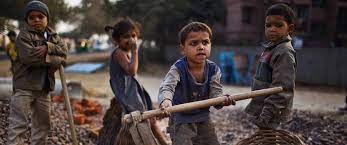If they would all live in just one country, they would be the ninth most populous State in the world; in fact nowadays there are about 152 million minors between 5 and 17 years, 1 in 10 in the world, victims of labor exploitation, of which almost half are forced to carry out hard and dangerous jobs, which put their health and safety at risk, with serious repercussions also from the psychological point of view. For them, the World Day Against Child Labor was established which is celebrated on June 12th, to put the spotlight on the millions of children whose childhood is stolen, removed from school and study, deprived of the protection they need and the opportunity to build the future they dream about. The geographical areas which are most affected by child exploitation are the developing countries, especially Colombia, Pakistan and Brazil, still very poor areas of the Earth because child exploitation is a product of poverty and also increases it, but this does not mean that they are excluded from the phenomenon the United States and Europe or industrialized countries in general where today there are about 145,000 cases of children under 15 exploited for work. Furthermore, in Eastern Europe the situation is aggravated also by child prostitution. Child exploitation occurs a lot in agriculture, where small workers are employed by families in fields or large plantations. But there are also children who work in the mines, in the quarries, in the workshops of matches, cigarettes, toys and fireworks; sometimes they are forced to remain closed in factories for months without being able to see their parents. The main reason for this exploitation is both social and individual poverty. Of course, this phenomenon brings with it very serious consequences because the vulnerability of children puts them at risk of accidents and occupational diseases more than an adult who does the same job. Working minors could be exposed to harmful products such as pesticides and herbicides in agriculture; children are unlikely to have sufficient knowledge to handle dangerous substances or sufficient bargaining power to refuse certain activities. According to an international organization, about 250,000 children are also involved in the wars all around the planet. We also recall the presence of humanitarian organizations at a global level, such as Unesco or Unicef, which seek to improve the living conditions of these poor children by trying to establish hospitals and schools to allow them to have a future. The Convention on the Rights of the Child states that: “….. States shall take all appropriate measures to ensure that the child is effectively protected against any form of discrimination or sanction based on the social status, activities, professed opinions or beliefs of his parents, their legal representatives or their family members.“
Gloria Pini 3AL
